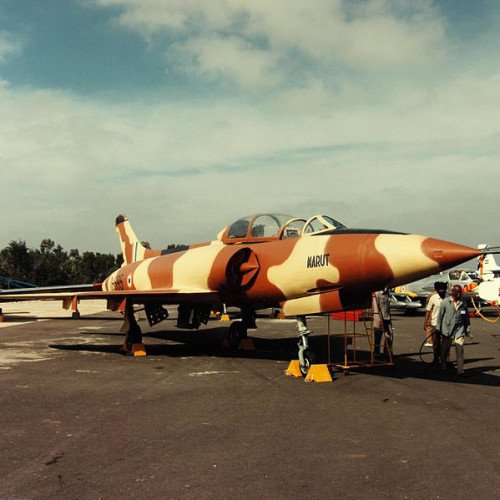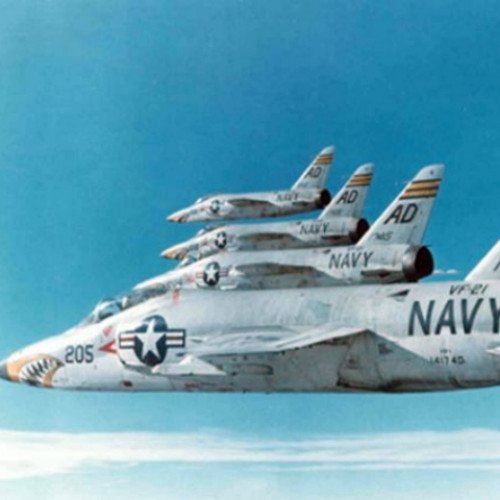HAL HF-24 Marut vs Grumman F-11 Tiger

HAL HF-24 Marut
The HAL HF-24 Marut ("Spirit of the Tempest") was an Indian fighter-bomber aircraft of the 1960s. Developed by Hindustan Aircraft Limited (HAL), with Kurt Tank as lead designer. It is the first Indian-developed jet aircraft, and the first Asian jet fighter (outside Russia/Soviet Union) to go beyond the test phase and into successful production and active service. On 17 June 1961, the type conducted its maiden flight; on 1 April 1967, the first production Marut was officially delivered to the IAF. While the Marut had been envisioned as a supersonic-capable combat aircraft, it would never manage to exceed Mach One. This limitation was principally due to the engines used, which in turn had been limited by various political and economic factors; multiple attempts to develop improved engines or to source alternative powerplants were fruitless. The Marut's cost and lack of capability in comparison to contemporary aircraft were often criticised. A total of 147 Maruts were manufactured, the majority for the Indian Air Force (IAF). While initially envisioned as a capable interceptor aircraft, it was primarily used for ground attack missions. In this role, the Marut saw combat during the Indo-Pakistani War of 1971, notably participating in the Battle of Longewala. By 1982, the Marut was increasingly obsolescent, and was gradually phased out during the late 1980s.
Statistics for this Xoptio

Grumman F-11 Tiger
The Grumman F11F/F-11 Tiger is a supersonic, single-seat carrier-based United States Navy fighter aircraft in operation during the 1950s and 1960s. Originally designated the F11F Tiger in April 1955 under the pre-1962 Navy designation system, it was redesignated as F-11 Tiger under the 1962 United States Tri-Service aircraft designation system. The F11F/F-11 was used by the Blue Angels flight team from 1957–1969. Grumman Aircraft Corporation made 200 Tigers, with the last aircraft being delivered to the U.S. Navy on 23 January 1959.